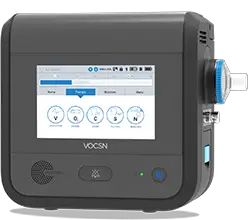GM is waging a battle with COVID-19 on two fronts. Will the ventilator push help?
As GM ramps up its assistance to Ventech Life Systems to build respirators, the company faces many engineering, manufacturing, and logistics challenges. These are areas in which GM can safely be assumed to be a world leader. Concurrent with its goal to create ventilators, GM must also continue to stay ahead of the public relations game. Recent reports have us wondering if the ventilators being fought over will have the impact the public is being led to believe.
The President told America he was ordering GM to build ventilators using his powers as chief executive on March 27th. Last night, after finally receiving an order from the U.S. government to prompt it, GM released yet another press release reiterating that it is in the fight with or without purchase orders. The full statement reads:
GM and Ventec Life Systems are working with speed and urgency to arm front-line medical professionals with the critical care ventilators they need to treat seriously ill patients. GM is proud to deploy its purchasing and manufacturing capability alongside the respiratory care expertise of Ventec. We remain dedicated to working with the Administration to ensure American innovation and manufacturing meet the needs of the country during this global pandemic.

It has been about 12 days since President Trump said that due to GM’s inconsistent promises, the administration would invoke the Defense Production Act (DPA) to order GM to do what it was already doing – making ventilators. Reporting from WXYZ in Detroit indicates that GM is being paid $489 million to produce 6,000 vents.
“We’re grateful to the GM team for working with the federal government to expand our nation’s supply of ventilators as the pandemic evolves,” said HHS Sec. Alex Azar.
GM has struggled with President Trump’s flip-flopping from praise for the automaker and its CEO, Mary Barra, to trash-talking the company and Ms. Barra. It can be difficult to determine if the President issuing the bully pulpit to help expedite the best possible results from GM, or if he is simply airing out his shifting moods on the topic.
GM-Trucks.com also did some digging into the subject of ventilator use to treat the most severely ill COVID-19 patients. These machines are used to help a patient who is mortally ill keep breathing after the patient would not have been able to do so on their own. The assumption made by many is that the machines will then help the patient return to health. But do they? Multiple reports are being made available that few COVID-19 patients who are placed on respirators are being returned to health. A study published in the peer-reviewed medical journal Lancet, details ventilator usage to battle COVID-19. It included this result: “…30 (81%) of 37 patients requiring mechanical ventilation had died by 28 days.” The study report then details more on the seven remaining patients, including, “Three patients were still on invasive ventilation at 28 days…”
This study jives with survival rate estimate of Dr. Mitchell Katz, a physician in New York City. His estimate is that roughly “15 to 20%” of COVID-19 patients who are placed on respirators don’t die. NPR ran a story on this topic this week as well, titled, “Ventilators Are No Panacea For Critically Ill COVID-19 Patients.” The story begins, “Most coronavirus patients who end up on ventilators go on to die,” and then adds, “And many of the patients who continue to live can’t be taken off the mechanical breathing machines.”
New York had prepared extra ventilators in preparation for just such a pandemic, but later abandoned the effort. Time will tell if the desperate, and very public, quest for more ventilators to help hot spots like New York City makes a meaningful difference in a war that is well on its way to being the worst pandemic of the modern age.

